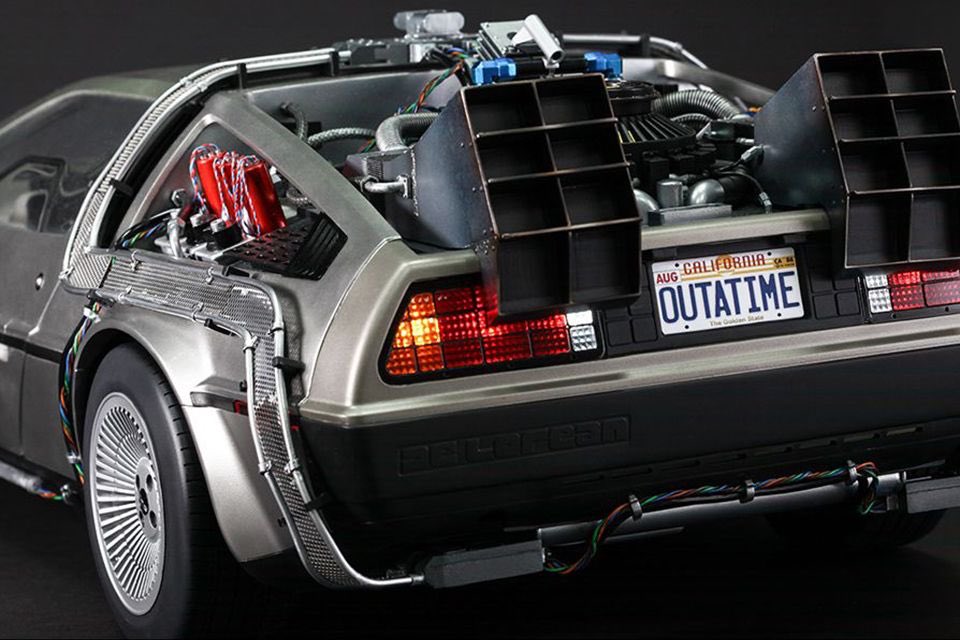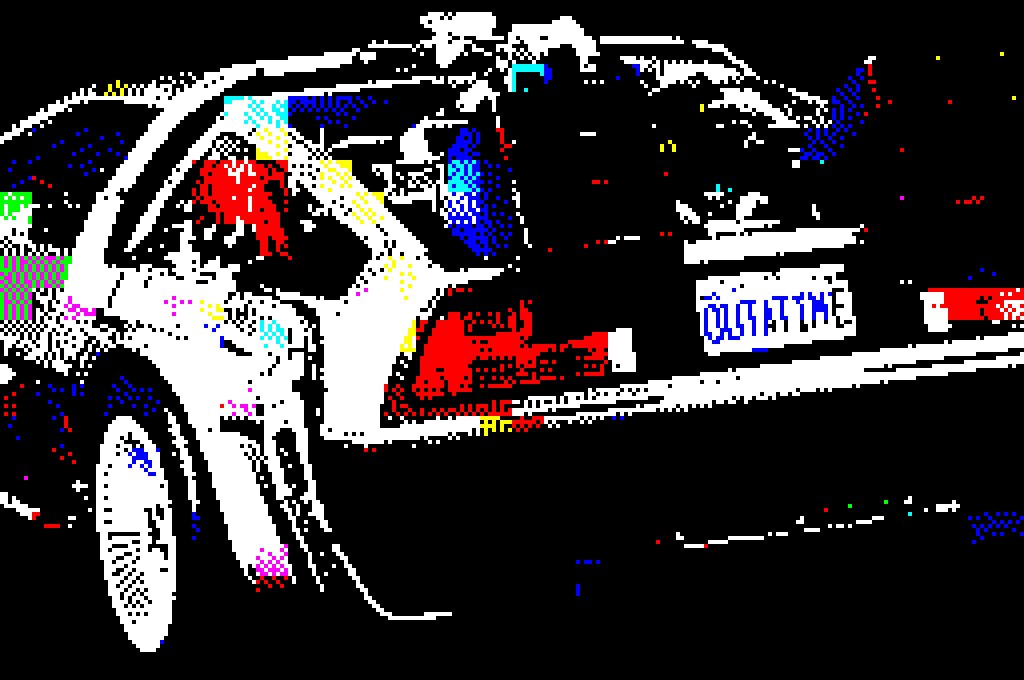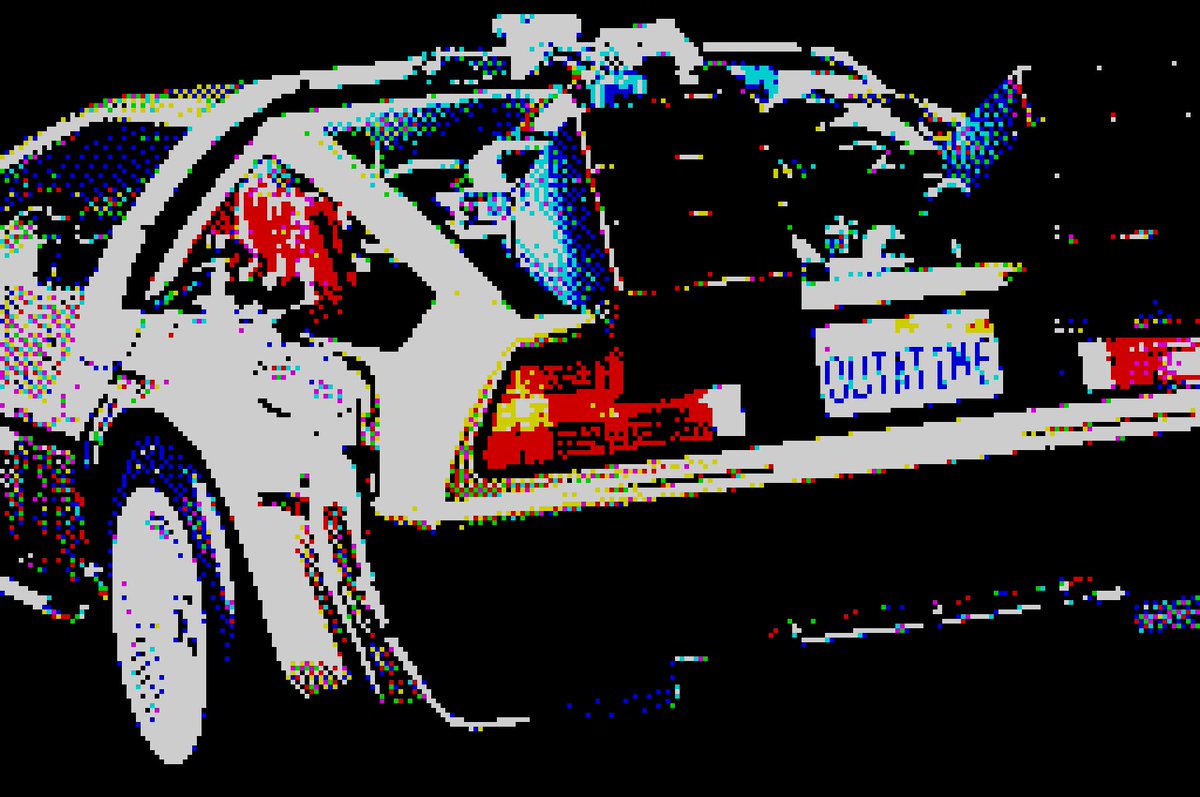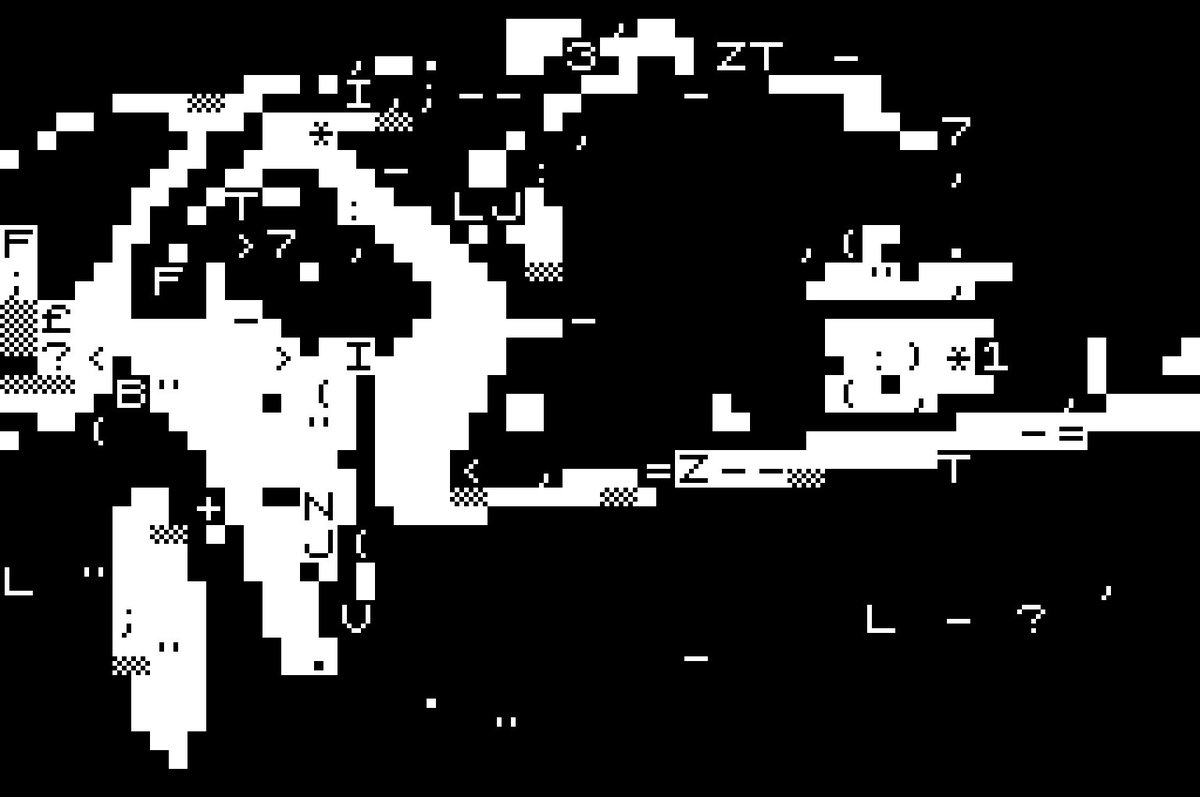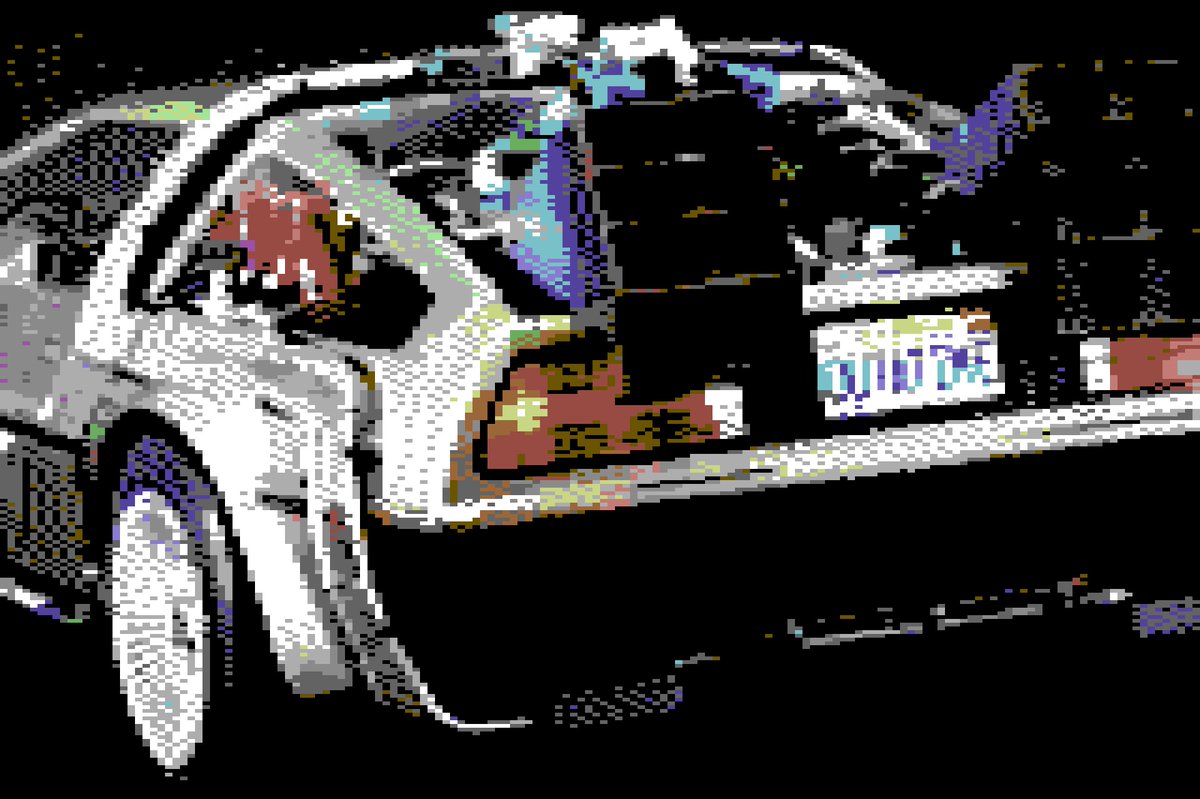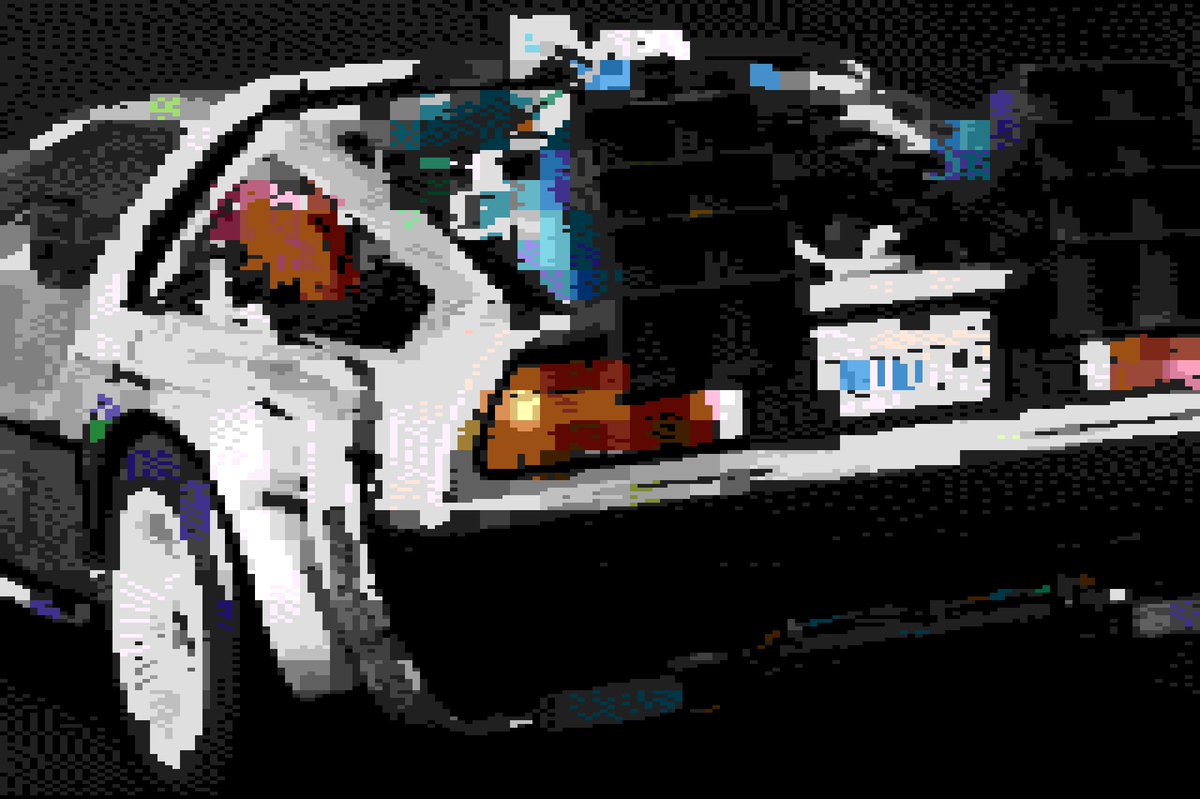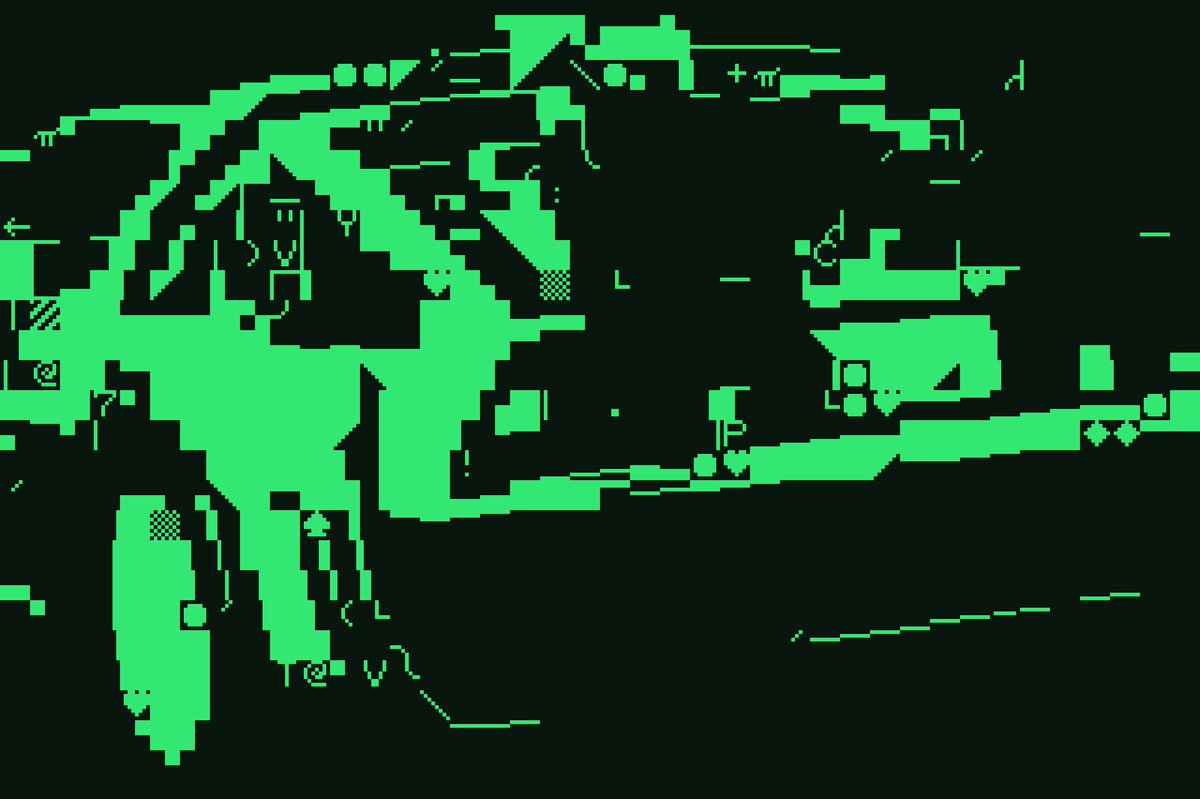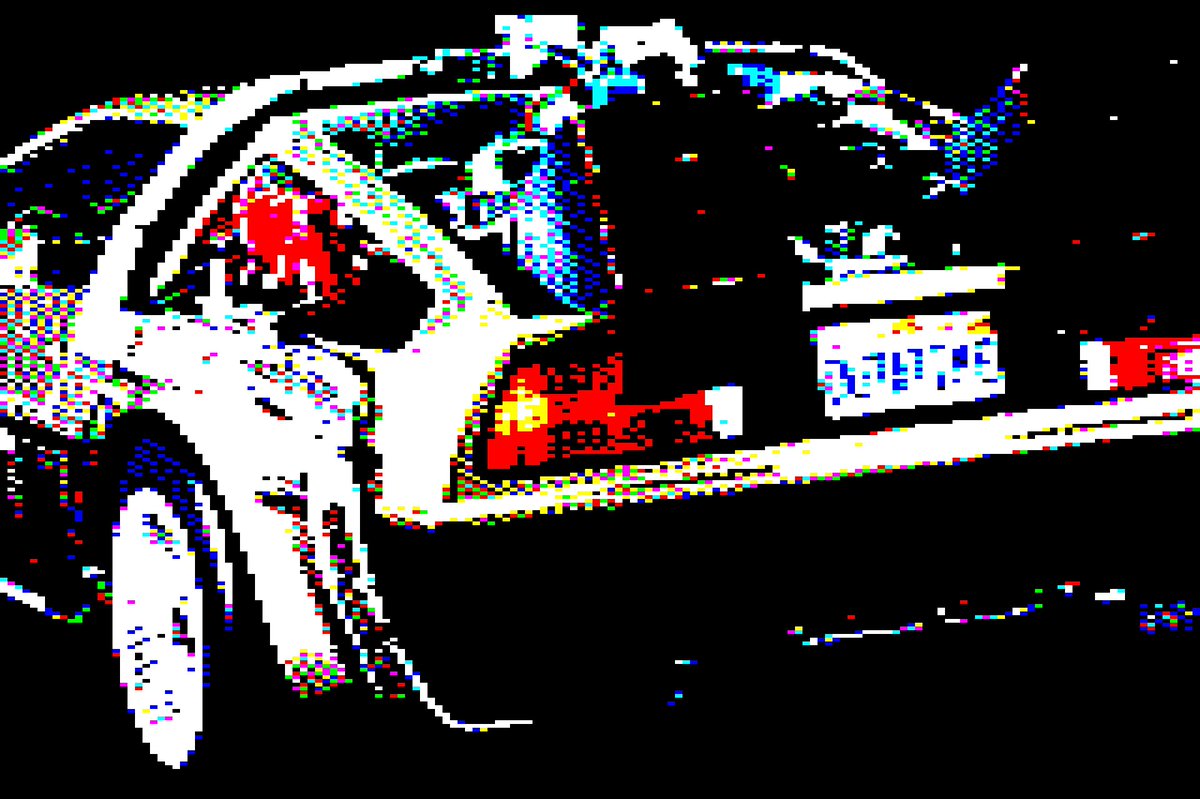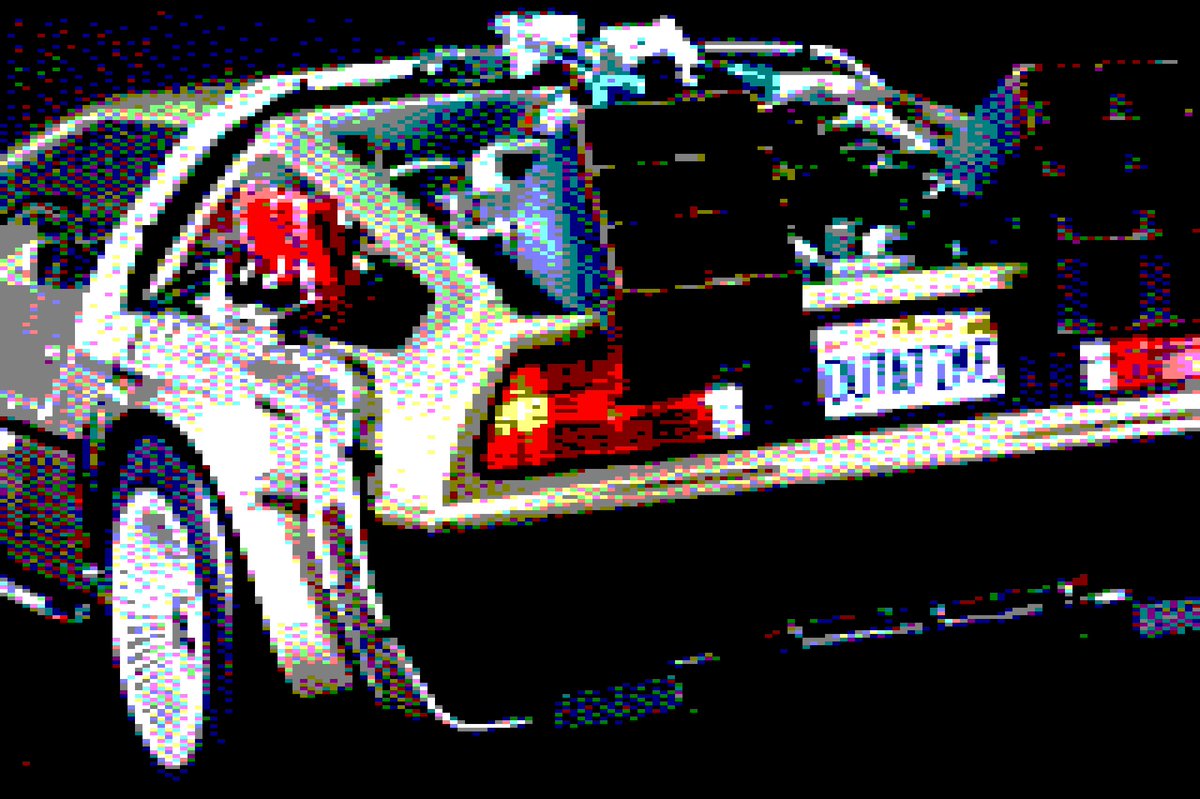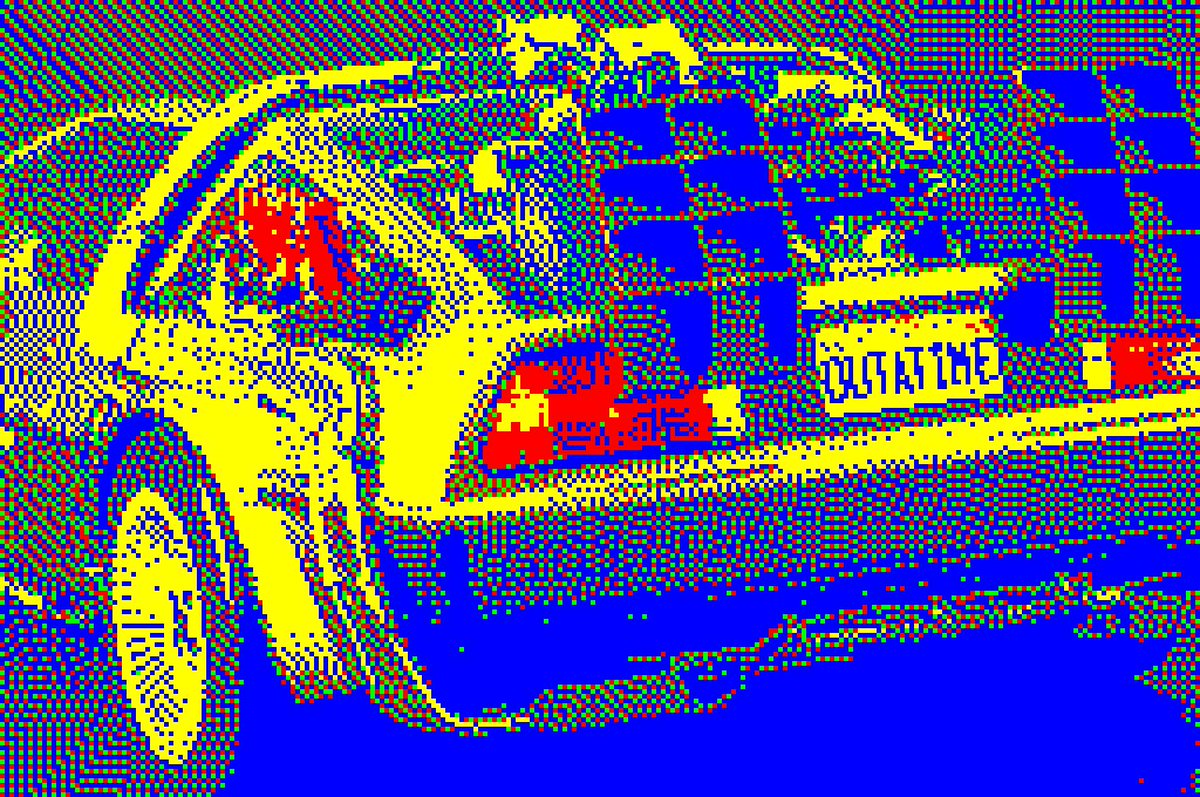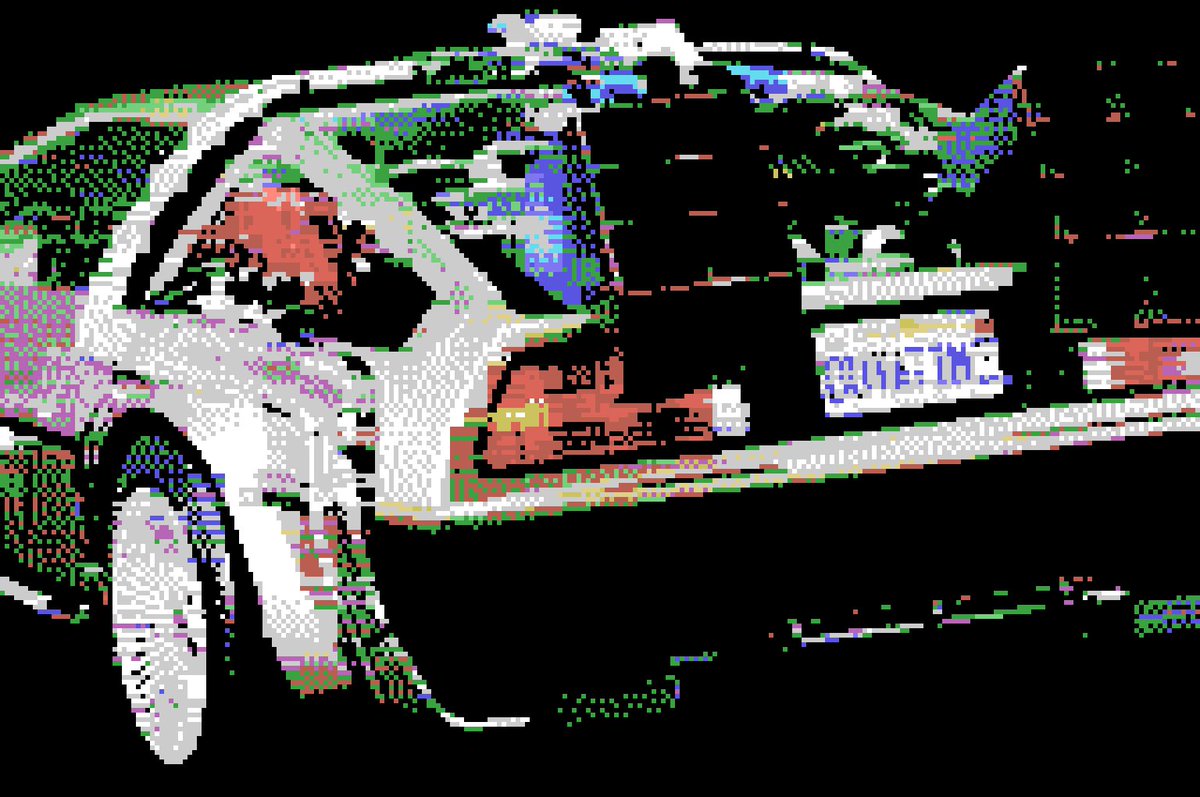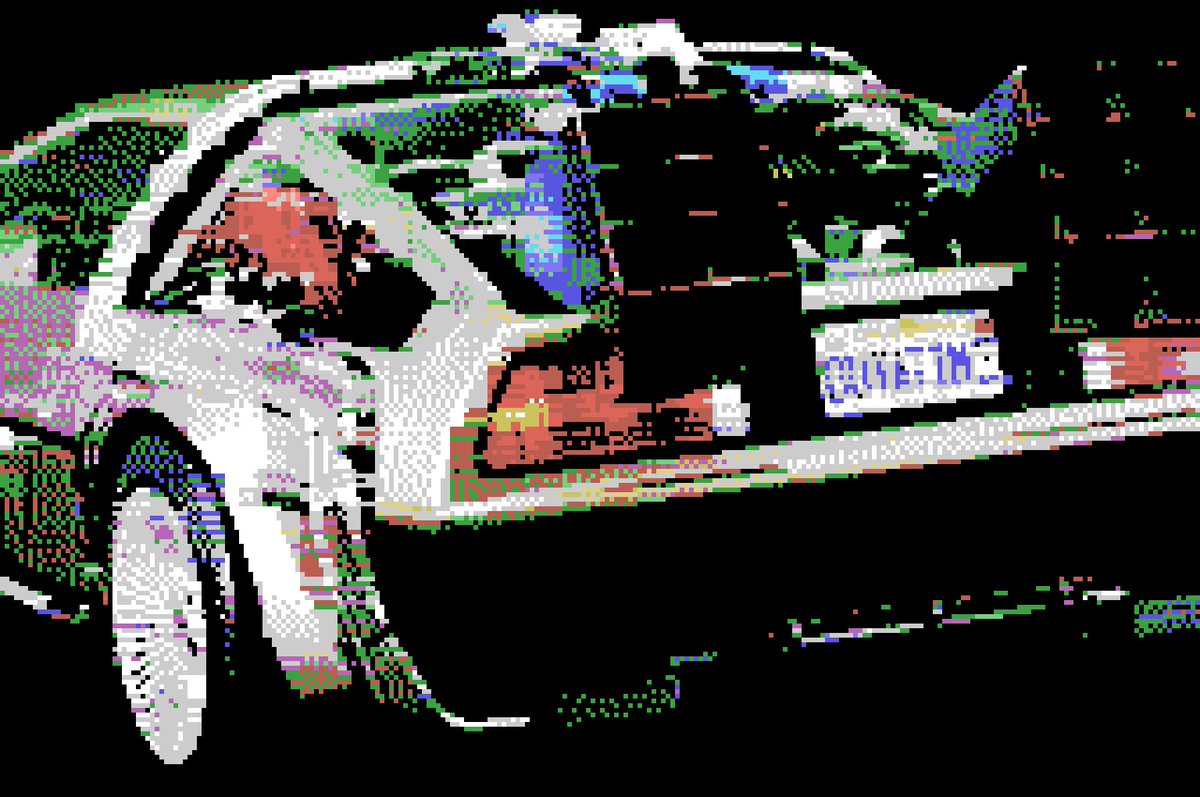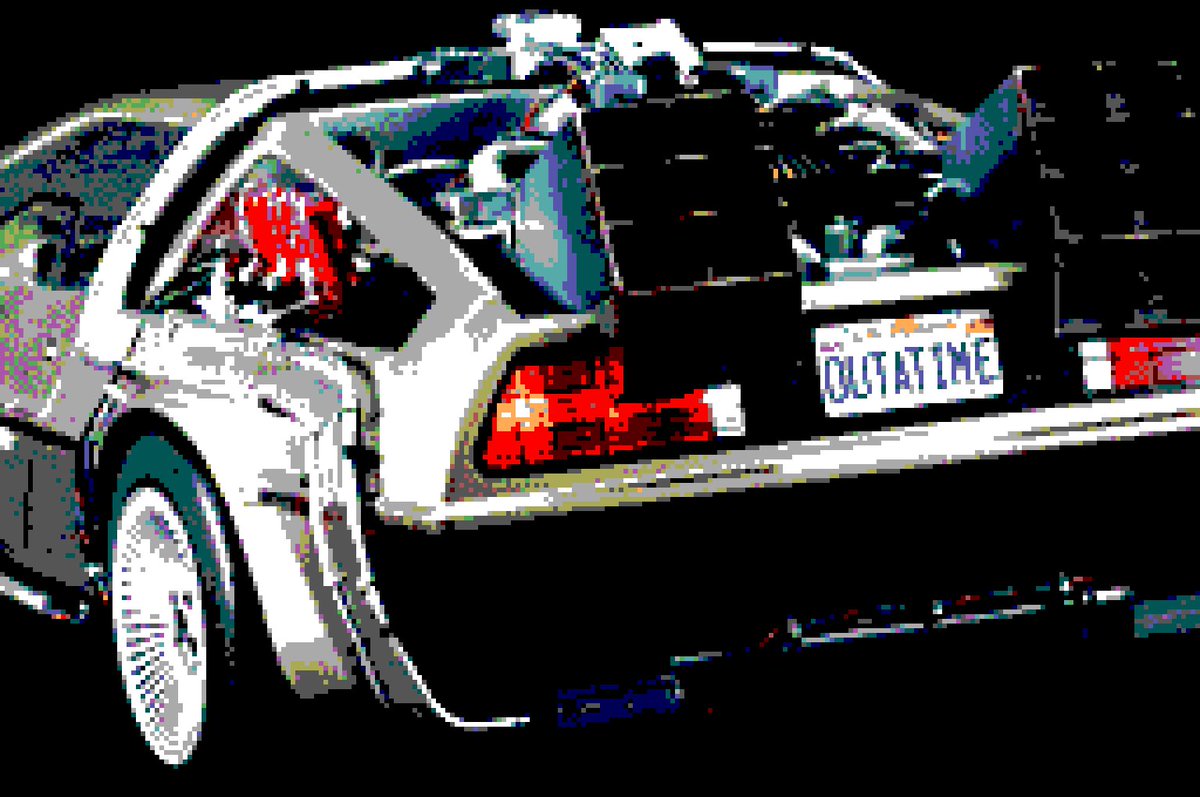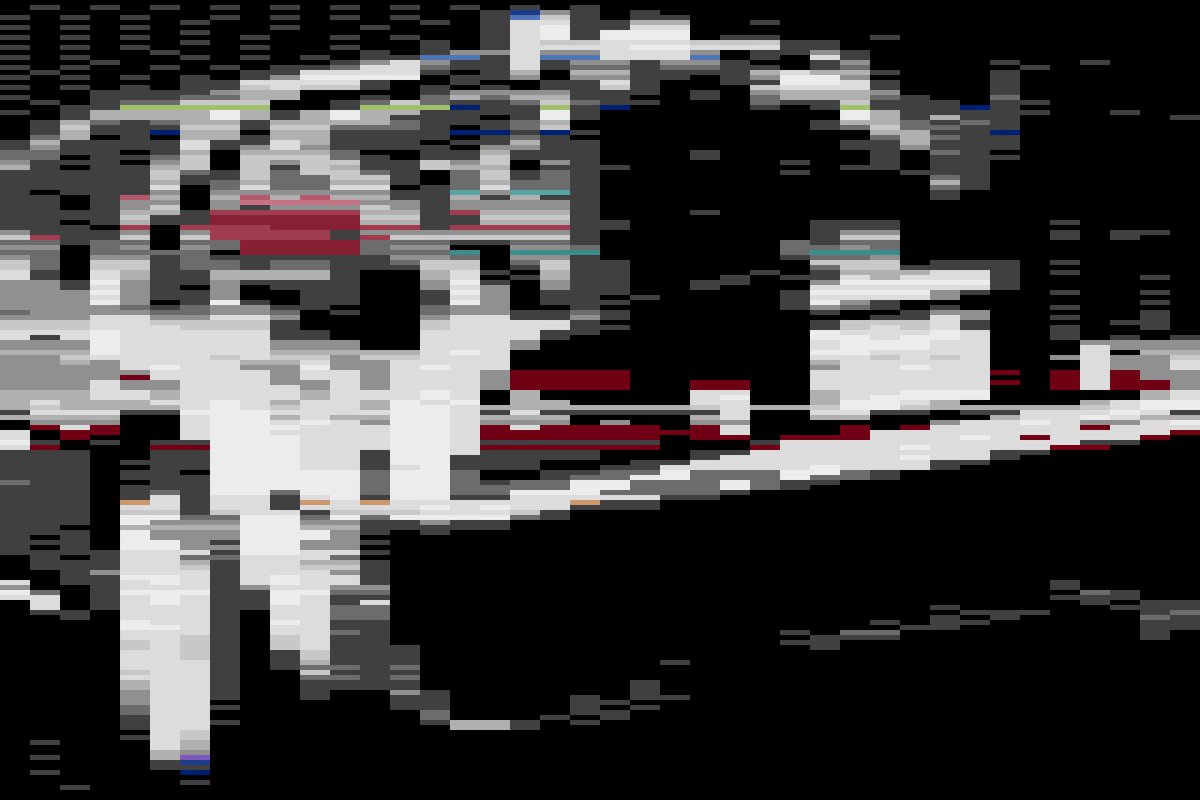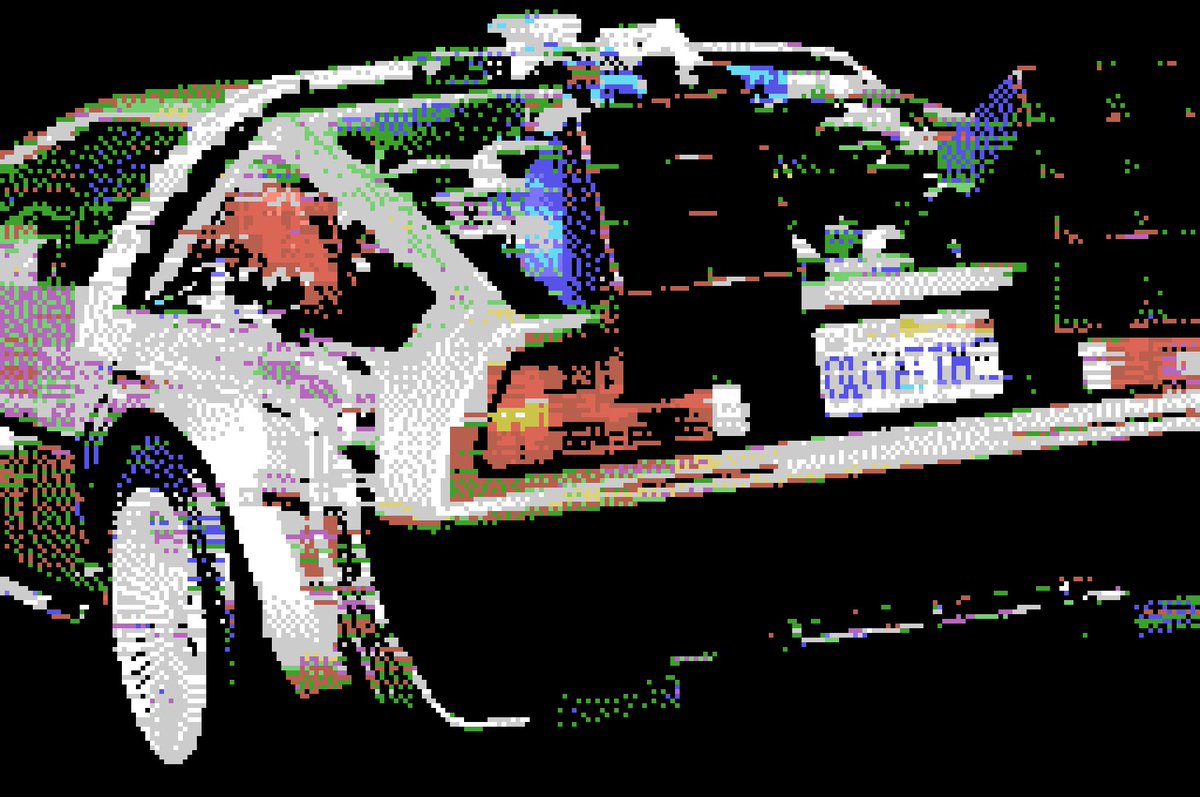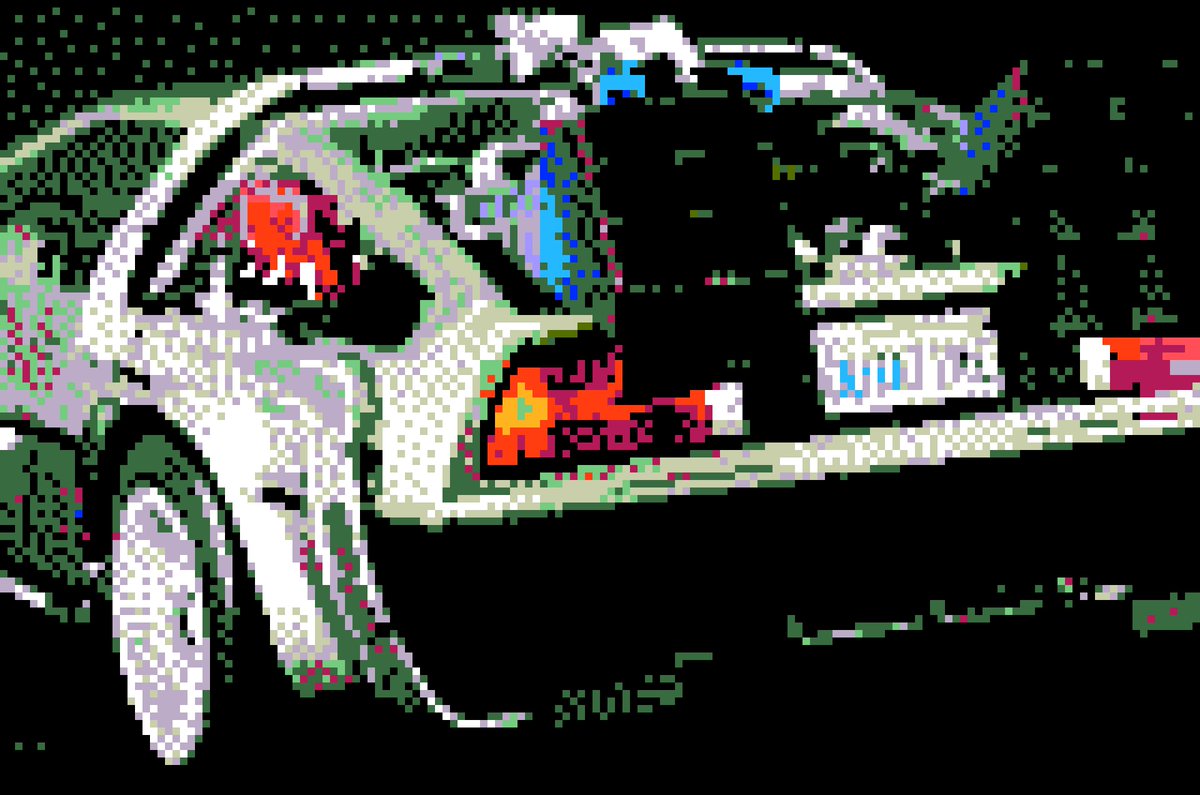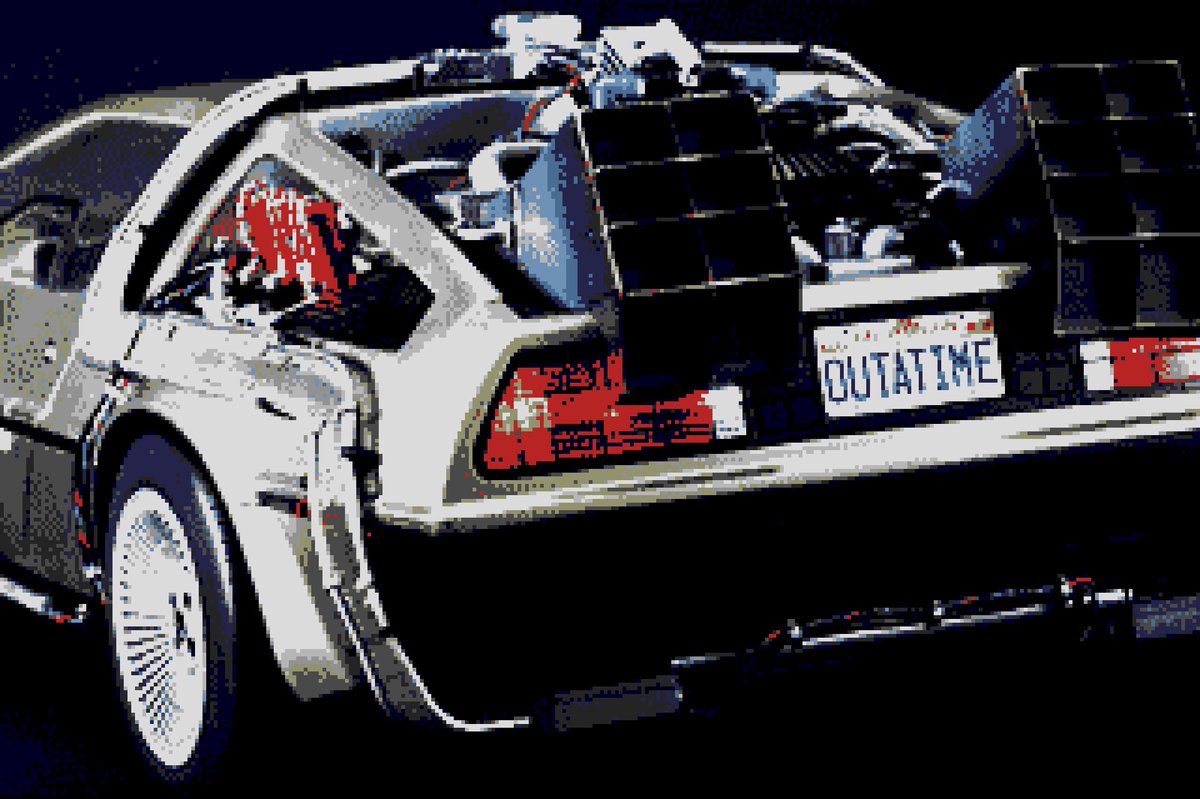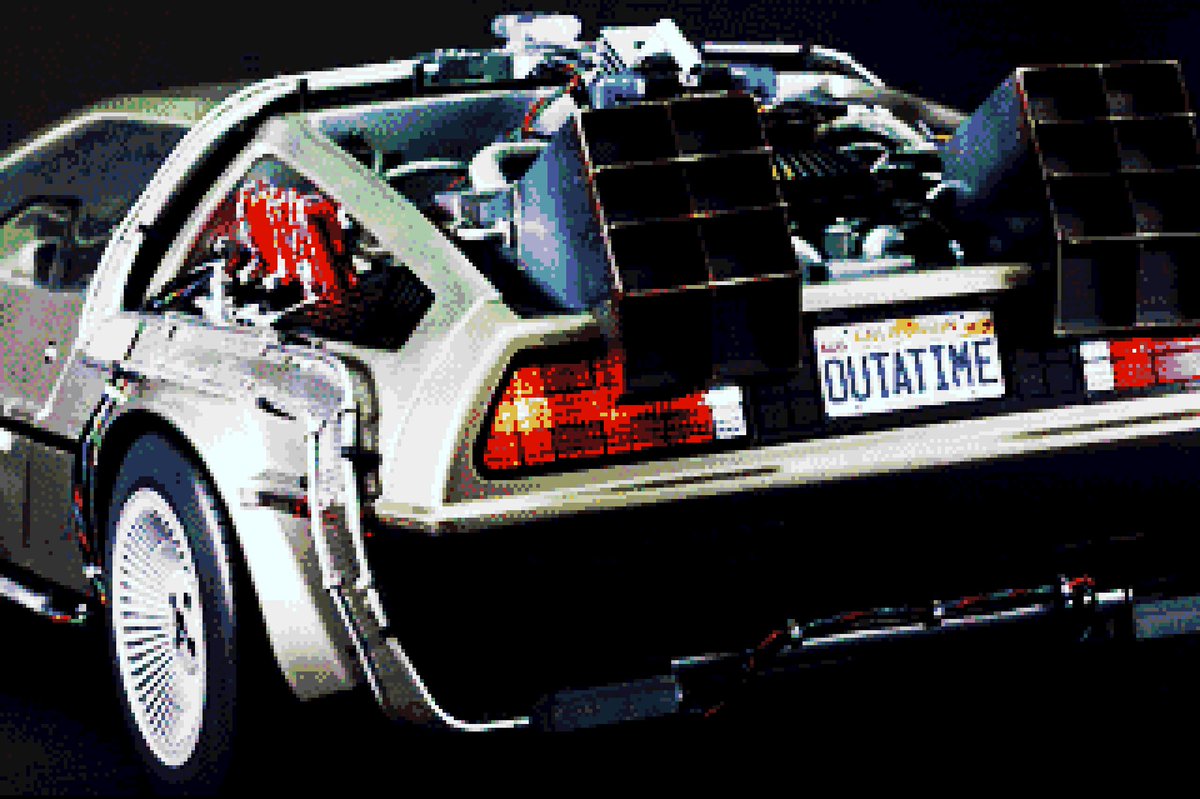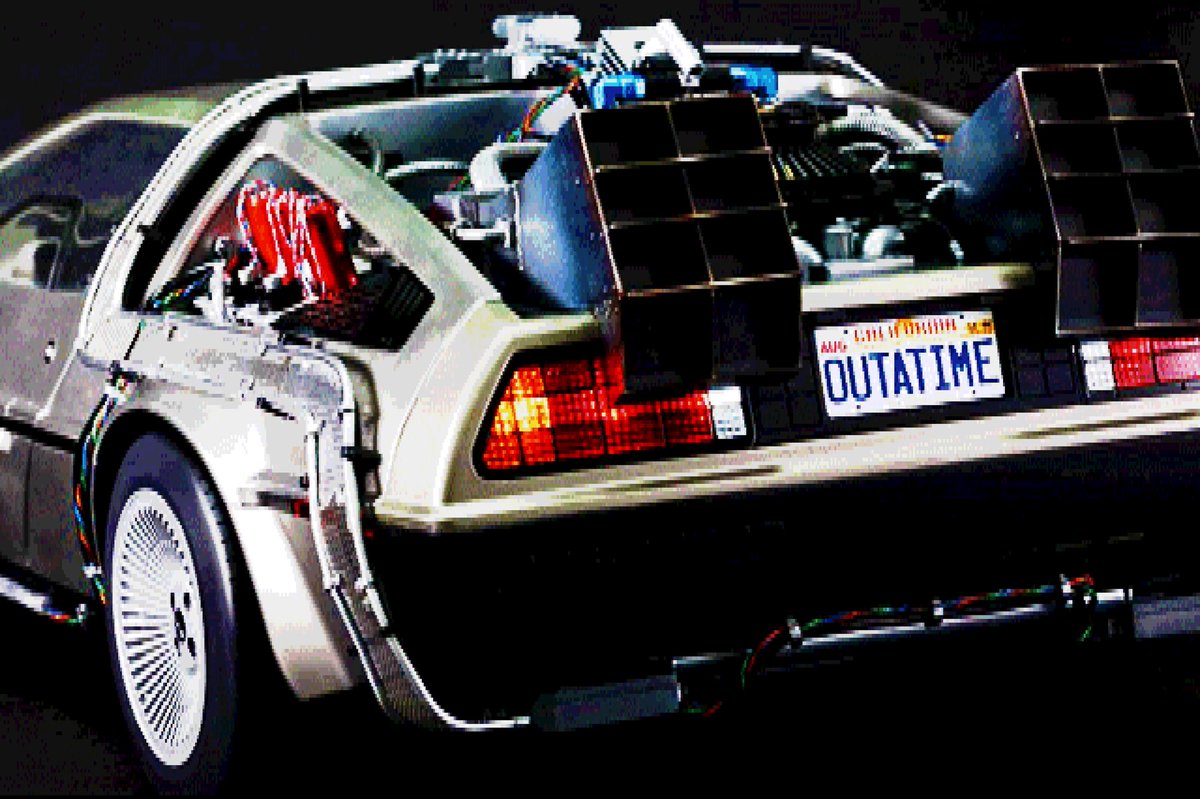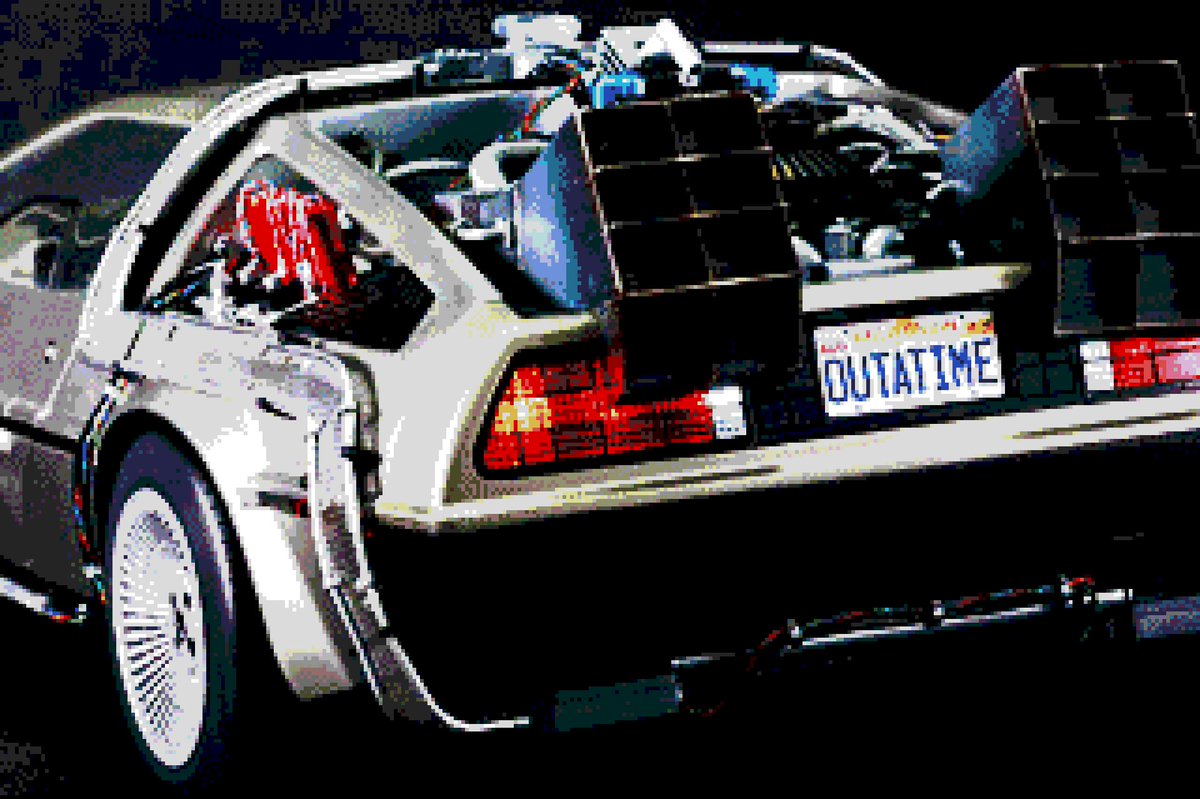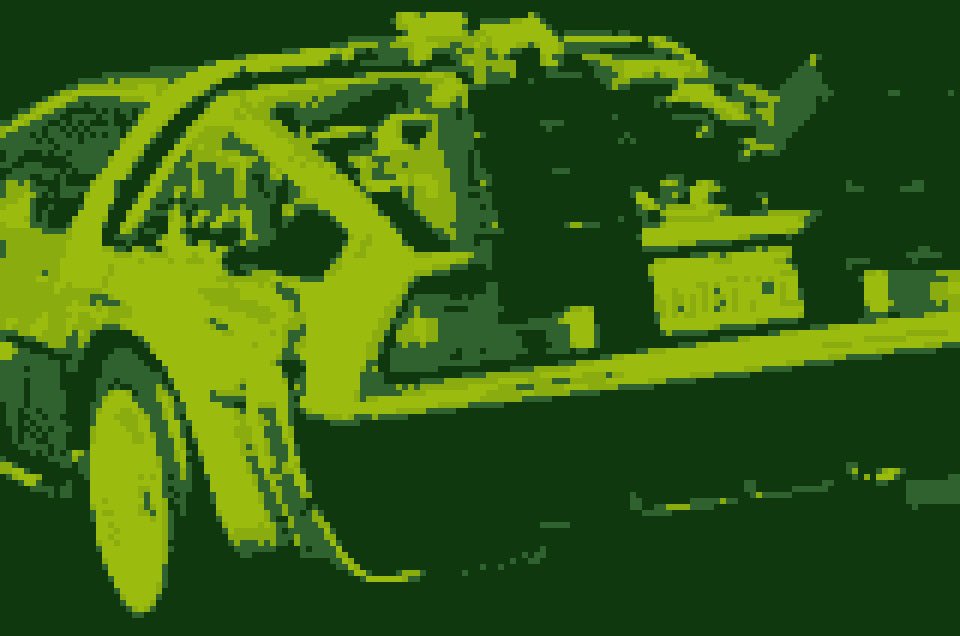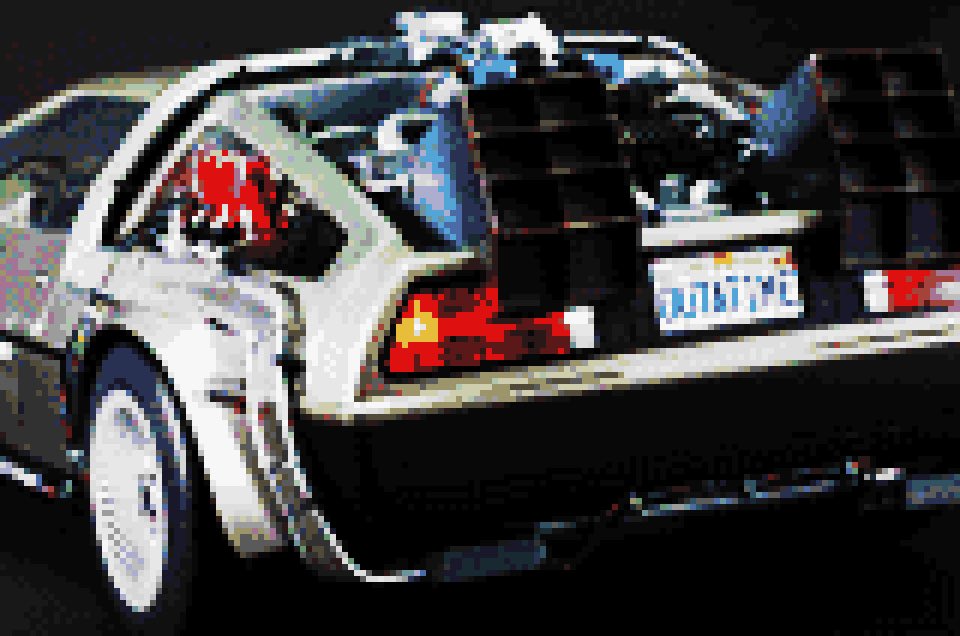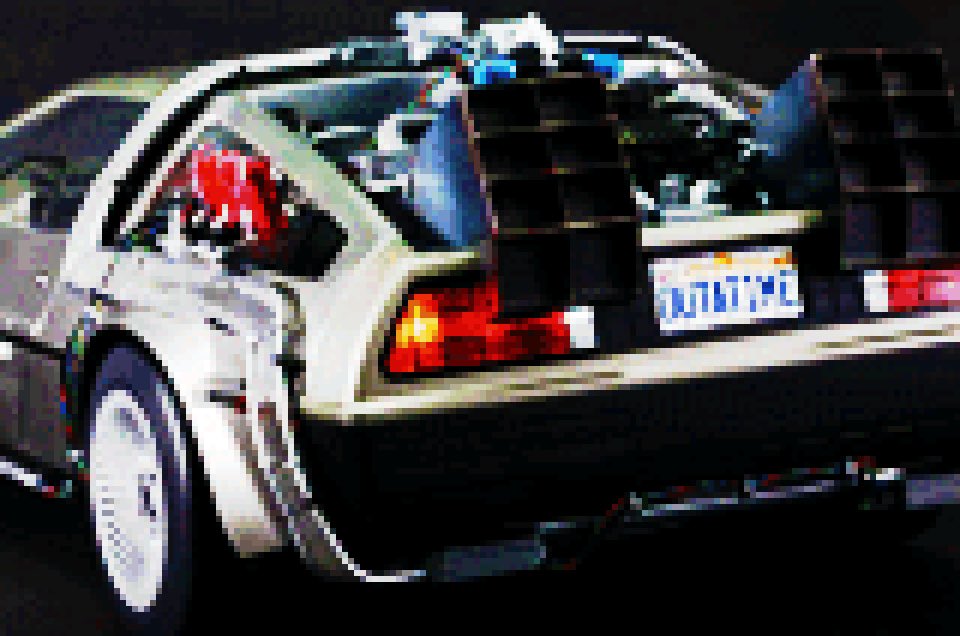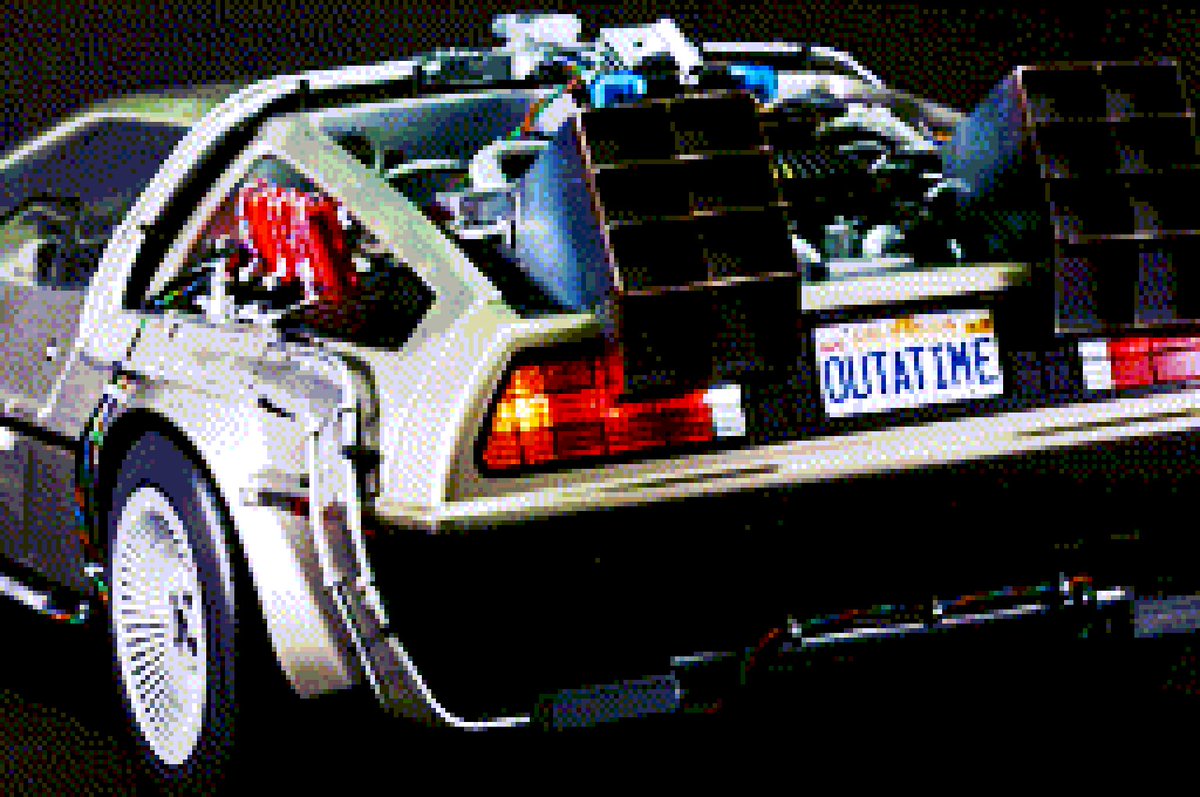I love the #ZXSpectrum’s colour mode - you can always tell a Speccy screenshot. But sometimes I wish attribute clash wasn’t a thing! Thought it would be interesting to convert the same image across a range of systems to show the differences, control image first... #Retrogaming
This isn’t a scientific comparison, just a conversion using the best looking colour mode the system (or conversion software) has to offer...
First the #ZXSpectrum using 8 bright colours from a palette of 15 at 256x192 resolution. 15 colours can be used at the same time but that looked worse. The Speccy is hamstrung by attribute clash, 2 colours per 8x8 square. Images have to be skilfully painted to get a nice result.
The #SinclairQL was a poorly positioned business Spectrum plagued with production problems and eventually cancelled by Amstrad in later years. Here it is in 256x256 resolution 8 colour mode. A decent image for the time.
While talking about #Sinclair, here’s the #ZX81. 32x24 resolution character blocks in monochrome. At the time, seeing any image on the machine would have seemed incredible (3D Monster Maze anyone?).
The Speccy’s playground rival, the #commodore64 #C64 fares much better using its multicolour mode. The 16 colour palette is more muted & the resolution lower than the Speccy at 160x200 but the resulting image is much better because every pixel can be a unique colour.
The #C16 / +4 in multicolour mode 160x200 resolution. Each block of 4x8 pixels can use 4 colours from a 121 colour palette (I think I’ve got that right). You can see the limited cubes of colour in the image much as you can in the Speccy image. A fairy rough image.
While we’re talking about Commodore, just for fun, here’s the #CommodorePET with a not half bad rendition of the image much like the ZX81.
The #BBCmicro’s palette looks a lot like the Speccy but without attribute clash. It’s using 8 colour mode at a resolution of 160x256 which puts it somewhere between the C64 and the Speccy.
The often dismissed #AmstradCPC looks great in 16 colour mode, 160x200 resolution! Playground rivalry was limited to the C64 and the Speccy, but the CPC could have been a real contender if games weren’t straight Speccy ports.
The #Dragon32 in pmode3 gave the better image, but not a good image - same res as the Speccy but only 4 colours, and 4 odd ones at that. The outlier 8-bit machines were not on my radar as a kid, and I really only read about the Speccy, C64 and Amstrad in the magazines.
The base #MSX in mode 2. Same resolution as the Speccy again, and a 15 colour palette where every 8th consecutive pixel can be 1 out of 2 of the colours, so limited in a similar way to the Speccy, but only per line not 8x8 block.
The #TatungEinstein was another machine that I had zero awareness of at the time. Here it is in mode 2, 16 colours 256x192 resolution.
The #Sega #MasterSystem is 256X192 resolution 32 colours from a palette of 64. As a console dedicated to graphics, it’s probably the best placed 8-bit machine to produce a good image. Before we move on to the #16bit machines, we’ll go back in time to the early home consoles...
The #Atari2600 in PAL mode here. You might want to do some further reading on the Atari’s graphic modes as it’s quite different to the machines so far (I know I will). Like the Spectrum, if you were shown this image you’d probably be able to guess the machine.
Like it’s rival, the Atari 2600, further reading on the graphics modes of the #ColecoVision is recommended. The machine is doing a pretty good job for a home machine from 1982.
The #Intellivision next in what I think is its 160x96 resolution 16 colour mode (if anyone sees any technical errors in this thread, please correct me!). I used to unfairly dismiss these early machines as old 70’s technology. A very respectable image from the machine here.
The graphical leap to the 16-bit machines was huge! The #AtariST in 320x200 resolution with 16 colours from a palette of 512. It’s a great image. I only ever played games on the ST at a friend’s house a few times, but I could see the machine was light years beyond my Spectrum.
Better than the ST is the #Amiga500 in 320x256 resolution and 32 colour mode from a palette of 4096 colours. The Amiga is the machine that enabled me to paint the pictures I’d always wanted to on my Spectrum.
The #AcornArchimedes was a machine I used at school. Image is 640x256 resolution 256 colours from a palette of 4096. This always seemed like a rival to the Amiga to me but was about double the price & as far as I know never had much support in terms of games. But it looks great!
The #SegaMegaDrive or #SegaGenesis at 320x224 resolution 61 colours from a 512 palette is not a million miles from the Atari ST but with more on-screen colours. I’ve only gotten in to the system in recent years and there are fantastic games throwing graphics all over the screen.
Sega’s rival was the #SuperNintendo #SNES. I think I would have been a Sega kid but the SNES is arguably (?) the better machine with better games. This image is 256x224 resolution and 256 colours and it shows, it’s wonderful! I’m really in to the SNES at the moment.
Some handheld systems now, starting with the #Nintendo #Gameboy. The 160x144 resolution 4 colour display wasn’t a graphics power house, but I was impressed at games like Turrican that remained great to look at despite the limitations. It seemed everyone had a GameBoy at the time.
The #GameBoyColour kept the same resolution of 160x144 but (as the name suggests) added colour, in this image 32 from a palette of over 32,000! The miniaturisation of technology by 1998 was incredible.
I really wanted an #AtariLynx. An even lower resolution than the GameBoy at 160x102 pixels but the world’s first portable colour display with 16 colours per scan line from a palette of 4096. It was incredible at the time to see graphics like this in a handheld.
Did you know anyone with a #NeoGeo? What about a #NeoGeoPocketColour? Now I’ve written it, I want one! A 160x152 resolution image with 146 colours from a palette of 4096 makes it the best of our handhelds in this list.
And coming full circle to the #ZXSpectrumNext which finally fixes the Spectrum’s attribute clash! This image is 256x192 resolution 256 colours and shows what could have been after the +3 to rival the ST and Amiga.
If anyone sees any errors, please correct me. And if you want to add other systems, especially some of the more obscure ones, go for it!
And credit must go to @8bitartwork for a great bit of conversion software.

 Read on Twitter
Read on Twitter